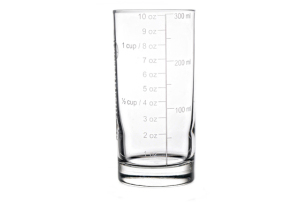Dehydration and Low Blood Pressure
 I realize your bigger concern tends to be how to LOWER high blood pressure, but today I want to touch on the reverse so you are aware of this potential problem.
I realize your bigger concern tends to be how to LOWER high blood pressure, but today I want to touch on the reverse so you are aware of this potential problem.
Low blood pressure, also known as hypotension, is when your blood pressure drops below 90 mm Hg systolic (top number) or 60 mm Hg diastolic (bottom number).
If your blood pressure is normally on the low side, it’s not a concern as long as you are not experiencing symptoms associated with low blood pressure. Symptoms include:
Dizziness
Fainting
Lack of concentration
Fatigue
Nausea
Blurred vision
Rapid, shallow breathing
If you are experiencing these symptoms, you need to take action to correct and prevent blood pressure from dropping too low.
Dehydration and blood pressure
Dehydration can actually cause your blood pressure to be low…and not in a good way.
Dehydration is a lack of fluid in the body, often caused by inadequate fluid intake or excess fluid loss. Running a fever and perspiring are two conditions that can lead to fluid loss. Some medications, such as diuretics and laxatives, can also result in fluid losses.
If you are dehydrated, the body struggles to deliver oxygen and nutrients, as well as remove waste products. The body cannot store fluid, so if must be replenished daily.
Feeling thirsty
Your body is comprised of 60% water. Being just 5-6% dehydrated can lead to feelings of fatigue and increased heart rate. Thirst is not a reliable indicator for dehydration. If you are thirsty, a certain percent of your body is already dehydrated.
You can monitor your hydration by paying attention to the color of your urine. Pale and clear urines indicates good hydration, while dark urine means you are dehydrated and need to drink more fluids.
Daily fluid intake
A general rule of thumb is to drink eight, 8-ounce glasses of water daily. However, the exact amount you need each day depends on your individual body size, lifestyle, and medical history. As long as you are not drinking excessively large quantities of water, it is better to drink too much versus too little.
Prevent dehydration
While water is your best choice for rehydrating, there are many options to obtain daily fluids.
- Fruits and vegetables
- Soups
- Gelatin
- Pudding
- Milk
- Juice
Monitor your intake
If you are notoriously poor at consuming water, you may benefit from monitoring your intake as you work to boost levels.
I was recently introduced to this Engraved Measuring Glass. It will hold up to 10 ounces of water/fluid. I initially thought it was on the small side, but then I don’t struggle to drink water throughout the day.
If you struggle, I can see how those large “jugs” that hold 32 ounces could be very overwhelming. This 10 ounce glass could be a more realistic tool as you consciously work to drink more water throughout your day.
As with any change, even making a move to boost water intake can be a struggle. If you want guidance as you implement changes, I encourage you to access “How to Make Heart Healthy Changes into Lifelong Habits” at http://hearthealthmadeeasy.com.
All the best,
Lisa Nelson RD



